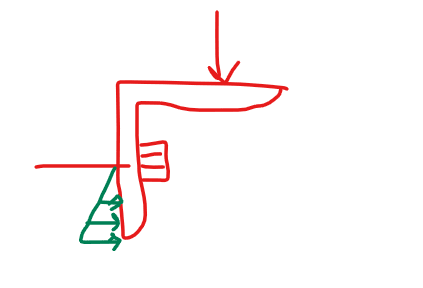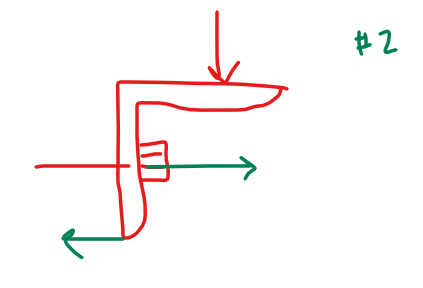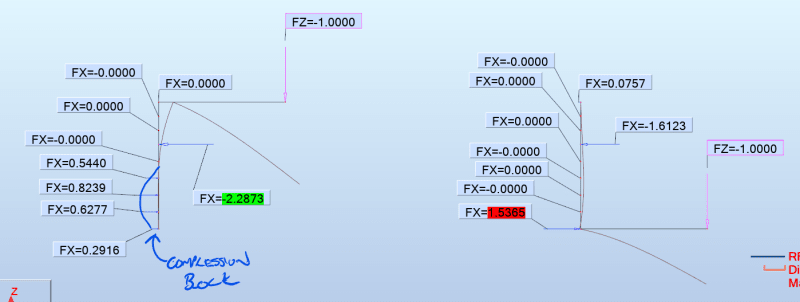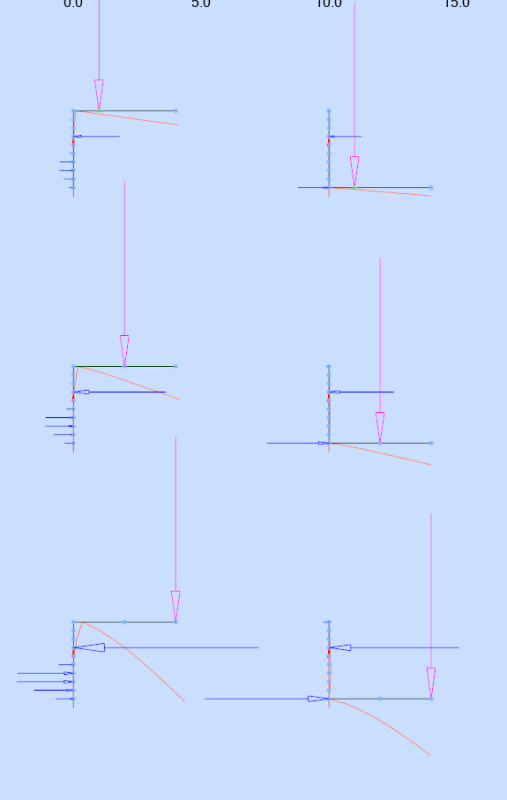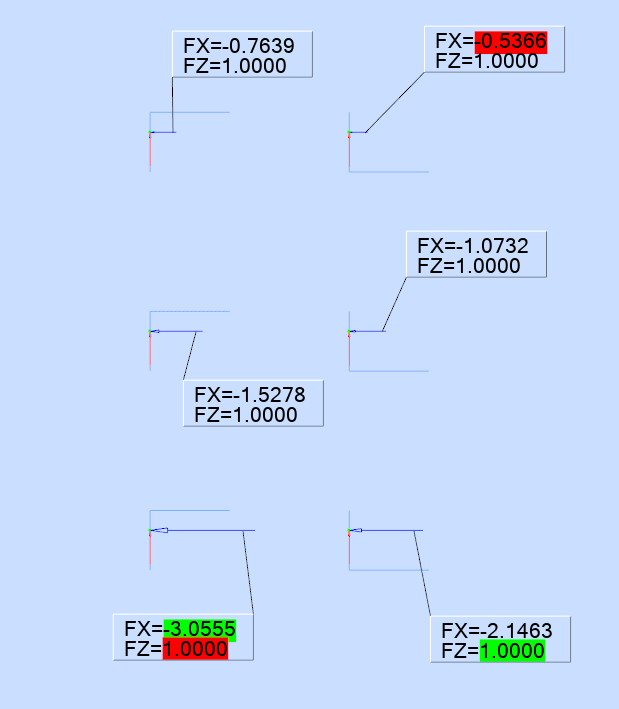it's called "heel and toe", also "tension fitting". it's how the angle reacts the moment being applied to it (by the offset load). It should be apparent just by looking and thinking (sorry, that came out snittier than I meant).
neither sketch is a free body ... where's the shear reaction, to the applied load ? where's the balancing tension load (in 1, like it is in 2) ?
There are a host of practical reasons why one and not the other. 1 is more "real world", the load causes the "toe" of the angle to dig in while the "heel" lifts. It's reasonable to see this as a linear pressure/force. It assumes a "sufficiently stiff" flange. As the flange yields the loading drifts to the tip of the toe, your 2. because the fastener will experience tension loads, it is reasonable (and proper design would have it) that the bolt is preloaded (so it doesn't gap under load and the angle is sufficiently stiff in practice). So now there's a pressure across the base of the flange, which will be relieved to react the moment (the uniform preload pressure is reduced on one side and added to on the other). A lot more analysis ... "truth" is like that.
Of course, anything you're that concerned about the loading then you should add a stiffening web (to relieve the flange bending).
"Hoffen wir mal, dass alles gut geht !"
General Paulus, Nov 1942, outside Stalingrad after the launch of Operation Uranus.
